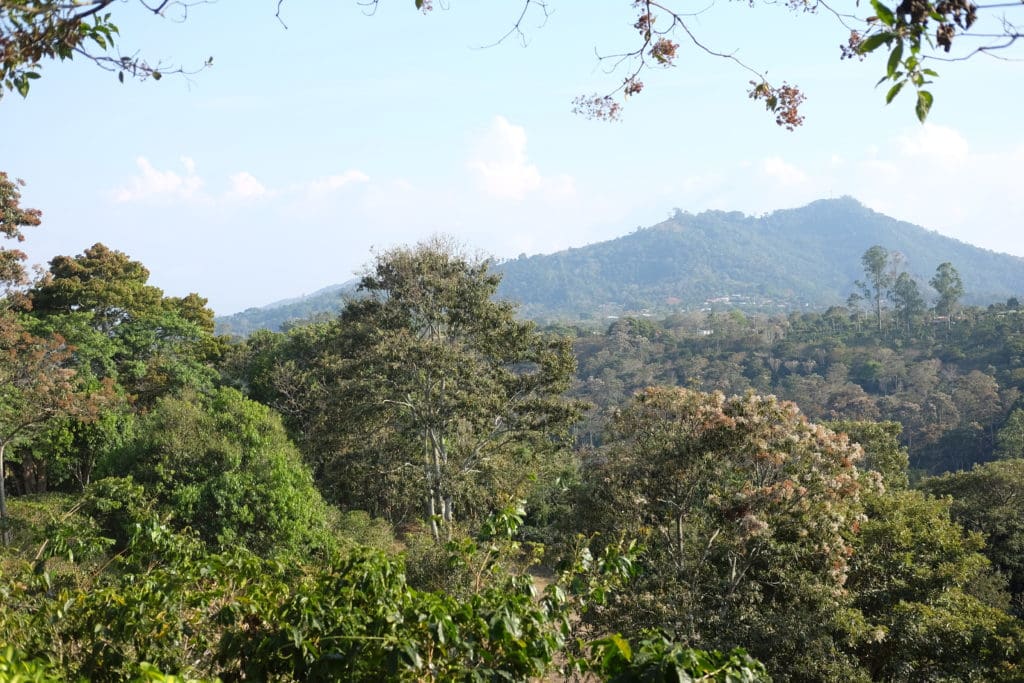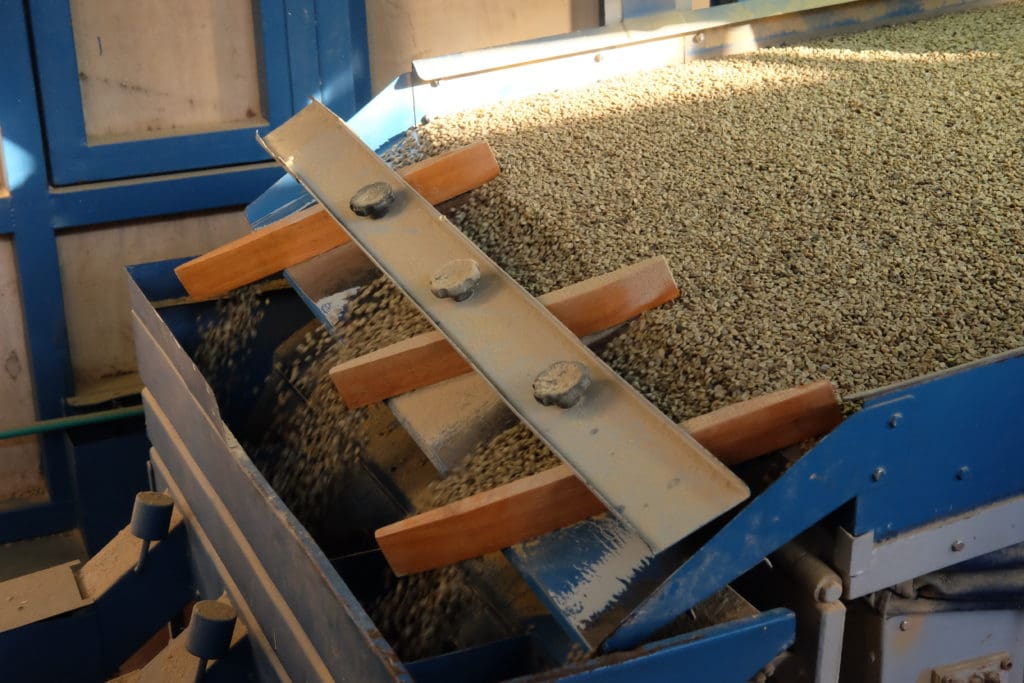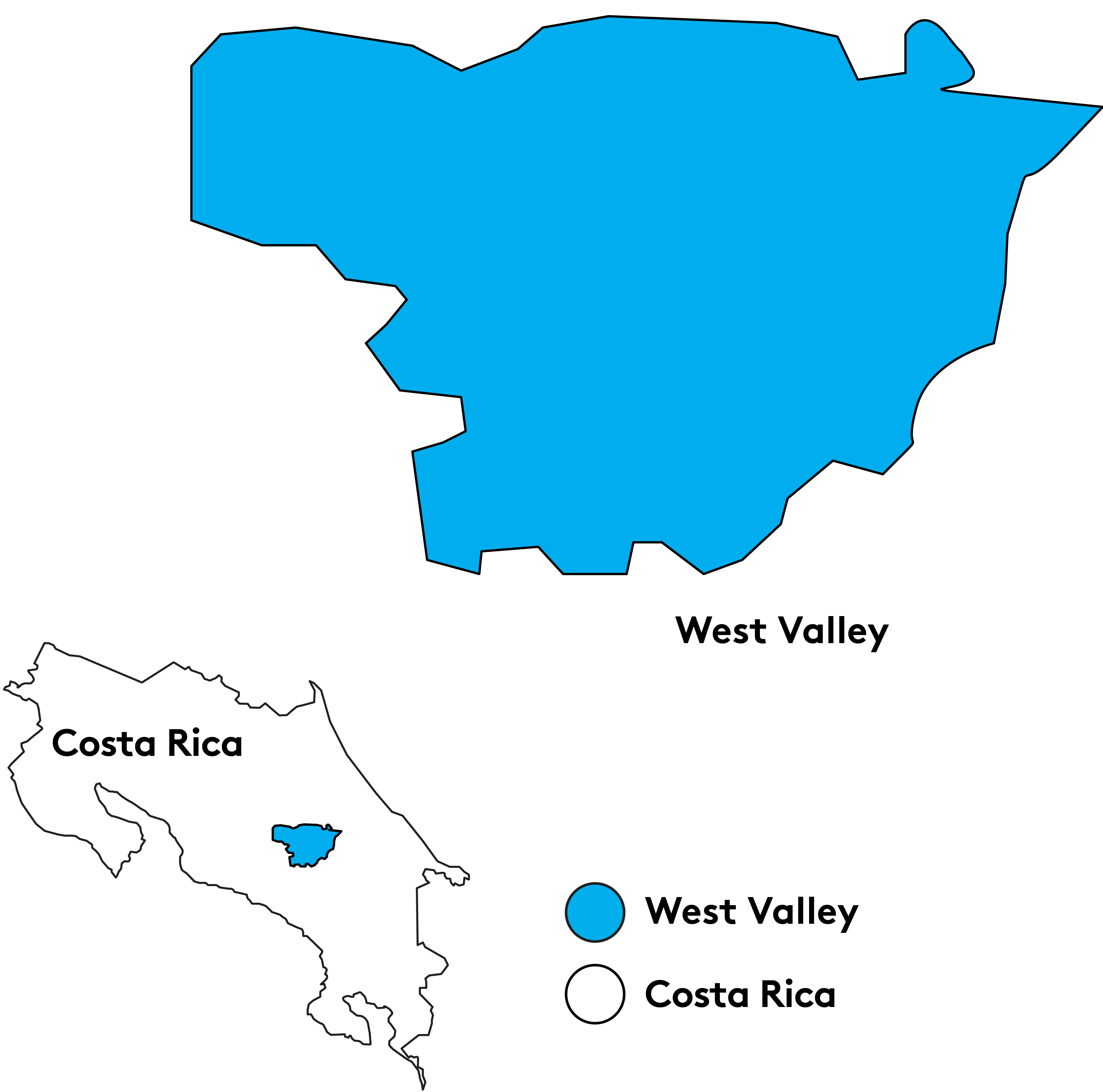Led by fifth generation producer Enrique Carvajal alongside his father, Hacienda Santa Anita is a farm with roots dating back to 1850 that is now leading the way toward a sustainable future for coffee production in Costa Rica. The estate has on-site facilities for every part of the operation from harvest through packing the jute and GrainPro bags, maintaining control over the process every step of the way. Santa Anita has traditionally focused on more traditional Washed coffees, but recently there has been an increased focused on specialty microlots like this H1 Centroamericano Yellow Honey.
While Santa Anita can be characterized by its quality growing conditions–like volcanic soil, consistent humidity levels, and stable year-round temperatures–it’s the farm’s dedication to being an industry leader in sustainability that sets the operation apart. Santa Anita was the first farm to be certified Carbon Neutral in collaboration with the NAMACAFE initiative. The farm utilizes a 51 kW/h solar array which generates 85% of all electrical consumption needed for the administrative offices and mill combined. The farm also houses 5 hectares of conservation area on its grounds. Beyond just environmental sustainability, Santa Anita also has a robust social program for supporting the people who work there. The facilities for farm workers are very well maintained, with a focus on good health and living conditions for not only the hundreds of people employed by the farm, but for their immediate family as well.
Santa Anita has started growing many new, mostly hybrid, cultivars, with the intention of facing the upcoming challenges to coffee production. This lot’s variety, H1 Centroamericano, is an F1 Hybrid cultivated by crossing the T5296 Sarchimor variety with Rume Sudan. H1 Centroamericano is known for its high yield potential, resistance to la roya coffee leaf rust and coffee berry disease, and its increased cup quality potential when well produced and processed. Hybrids like this one are still few and far between, most having been developed over the last 10 or so years, but are a welcome glimpse into a sustainable future for coffee production.
The team at Santa Anita chose Yellow Honey processing for this lot of coffee. Processing begins with floating the cherries with fresh water for sorting. Next, the cherries are depulped using an ecological depulper; this machine is calibrated to remove and wash away 50% of the mucilage of the cherry. Finally, the pulped cherries are moved to the shaded patio to dry until they reach their target humidity.





